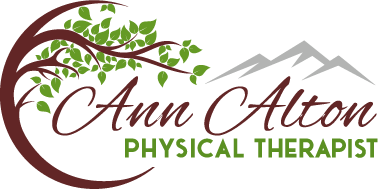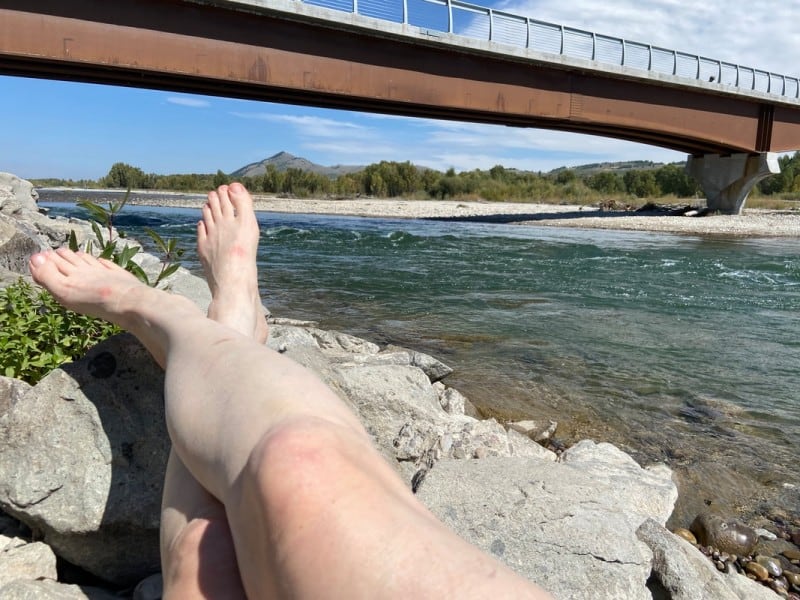Hi. I’m Ann Alton and I’m a physical therapist. Today, I’m going to explain the vagus nerve to you. We will dedicate a series to this. What is the vagus nerve exactly? It is one of my favorite things. It may sound strange, but this nerve’s signal begins in the brain, bypasses the spinal cord, and goes straight to all of your organs. Its principal purpose is to regulate these organs during sleep and digestion. And the opposites are fight, flight, and even freeze.
The vagus nerve is most active when we are feeling calm, relaxed, and connected. So, we want to take care of it. We want to ensure that everything is functioning correctly. Dysregulation looks like irritability. It looks like all kinds of moodiness and poor decision-making. It may hinder digestion, increase blood pressure, and intensify your pain.
There are several reasons to regulate this nerve. We can strengthen our immune systems, decrease inflammation, balance our hormones, feel less pain, and be better suited to deal with stress and suffering. We have improved relationships, make better decisions, and sleep more soundly.
So, without further ado, let’s do a few exercises, keeping in mind that some of these actions may create a state that is more unregulated and irritable. If this happens, just stop the video, relax, and then resume viewing. We’ll finish with a grounding exercise afterward, which should help you get back to normal. But, in the meantime if you find yourself growing agitated or cranky, simply stop and relax.
The first exercise that I wanted to teach you is eye movement. I will just cover a part of it, leaving the rest for you to practice on your own. I must use my fingers to move my eyes. You don’t have to use your fingers, but I must. Watch how my fingers are gradually moving to the side. And you will go as far as you can until you experience tension in your eye muscles.
And this stretch may not feel great, it may be a little painful. That’s okay. Essentially, you will hold this until you feel something, like a switch, activate. You want a deep breath, a swallow, a yawn, and a sense of melting – anything that indicates that you are starting to relax.
You’re still looking over here when it happens. You will make your way to the other side quite slowly. Wait, the same thing will happen. You can do up and down, and then it’s up to you if you have time to repeat if you want to. While waiting for sleep, or if you have time, you may practice the “Thousand Yard Stare” in bed, which entails locating the midpoint where your inner and outer eye muscles and upper and lower eye muscles feel equal in tension or length. As a result, it feels as though you are staring into the horizon.
You may repeat the previous exercise with your eyes open and closed. You may also try cupping, which includes putting your hands over your eyes, keeping them open this time, and pretending as if you are looking out at the horizon of a wheat field or the ocean, whatever makes you feel happy.
This is effective because, during the fight-or-flight response, our eyes move rapidly. They travel around, but do not use the periphery of your vision; they only use the center of your visual field. So, biologically, this connects with your survival brain language. The body communicates to the brain that the eyes are moving slowly and that peripheral vision is being used. Therefore, we cannot be in any danger. We must be safe, so we can relax.
That is one of them. The second exercise is singing or humming. You may do this while driving to work. You may do it any place, including the shower. The vagus nerve descends and has a close relationship with your vocal cords, which is the main reason why it is effective. So what you’re doing is engaging that, which will help stimulate the rest of the vagus nerve, enhancing digestion and all of the organs we stated earlier.
If you’re feeling a bit agitated or unpleasant, it might be due to the exercise we just finished. So, let’s perform a grounding exercise. And the chair behind me is the greatest method to do this. This is the chair. We’ll go ahead and sit in the chair, and you’ll identify your contact points. Your touch points with the chair will be your butt, hip bones, thighs, and where your feet come into touch with the ground. It might be at the point where your back meets the chair and your hands rest on your thighs.
If you need a little more stimulation, you may also wiggle your feet, wiggle your buns, and rub your hands. However, I want you to examine these three areas and then zero in on the one that appears most prominent to you.
Your thoughts will wander. Your lungs take in air. Your heartbeat is strong. Your stomach and intestines break down food. Your brain thinks. It’s what it does. So, no concerns, no embarrassment, no guilt – simply accept what’s happened and trace it back to those contact spots. And that will, once again, speak your survival brain’s language, bringing it back to, hey, I’m here, I’m now, and I’m safe.
So that’s it for Vagus Nerve (part 1), and I hope you’ll stay tuned for the next one. Thank you for listening and have a great day.



